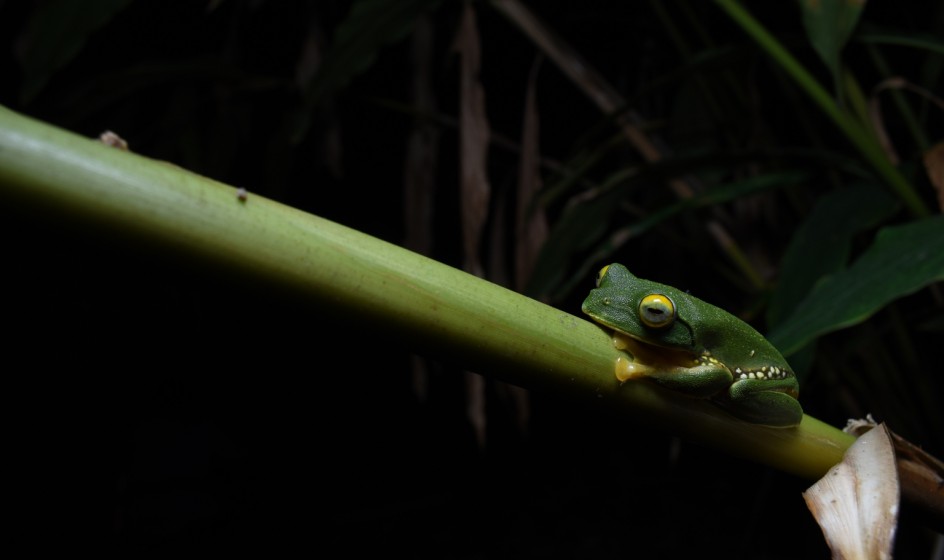

Anamalai Flying Frog

Protecting the Anamalai flying frog in its human-modified habitat, the cardamom and tea plantations in Munnar, India
Among the high diversity of frogs in India is a relatively newly discovered (2000) ‘tree’ frog species, known as Anamalai Flying frog (Rhacophorus pseudomalabaricus). A Critically Endangered species as per IUCN Red List, it is highly endemic to Anamalai Hills in Munnar, Kerala. Over the years, the species has witnessed a declining trend in its population. Though it has shown adaptation to the human-modified landscape (the plantations), the threat of extinction looms large due to accelerated commercialization of plantations, which negatively affects the species’ breeding and nesting success. Only a few breeding hotspots for the species are observed in the scattered cardamom and tea plantations in Munnar. The plantation management there, though committed to the conservation values, has limited capacity and technical know-how on best practices especially on amphibian conservation. In the absence of key information, they regularly undertake de-weeding works, often disturbing or destroying the species breeding site. WTI plans to reach out to the key stakeholders and assist them in safeguarding the breeding hotspots by ensuring minimal human disturbance to the species. Small yet focussed measures such as sensitizing the plantation owners and the workers to adopt frog-friendly measures, are critical to conserve this endemic species. Hence, the main aim of this project is to build capacity of plantation workers and the Forest department staff in order to safeguard the species.
Species:
Anamalai Flying frog (Rhacophorus pseudomalabaricus)
Implementing organisation: Wildlife Trust of India (WTI)
Country: India
Funding period::
Dec 2021 - Dec 2022
Project goals
- To identify and characterise frog breeding sites
- To establish regular, biosecure monitoring for those sites
- To build awareness amongst stakeholders, such as plantation owners/managers and forest departments
- To build capacity amongst plantation workers and forest department staff to be able to employ frog-friendly management practices (plant management, pest management, biosecurity)
Planned activities
- To survey, study and monitor the species in their breeding sites in the plantations
- To conduct interviews with stakeholders to understand their knowledge and perception
- To conduct workshops (1) for plantation workers to proactive frog-friendly management and (2) for Forest management staff on species identification, monitoring and biosafety protocols
- To conduct meetings with the landowners and plantation managers and forest departments to evaluate and develop long-term conservation